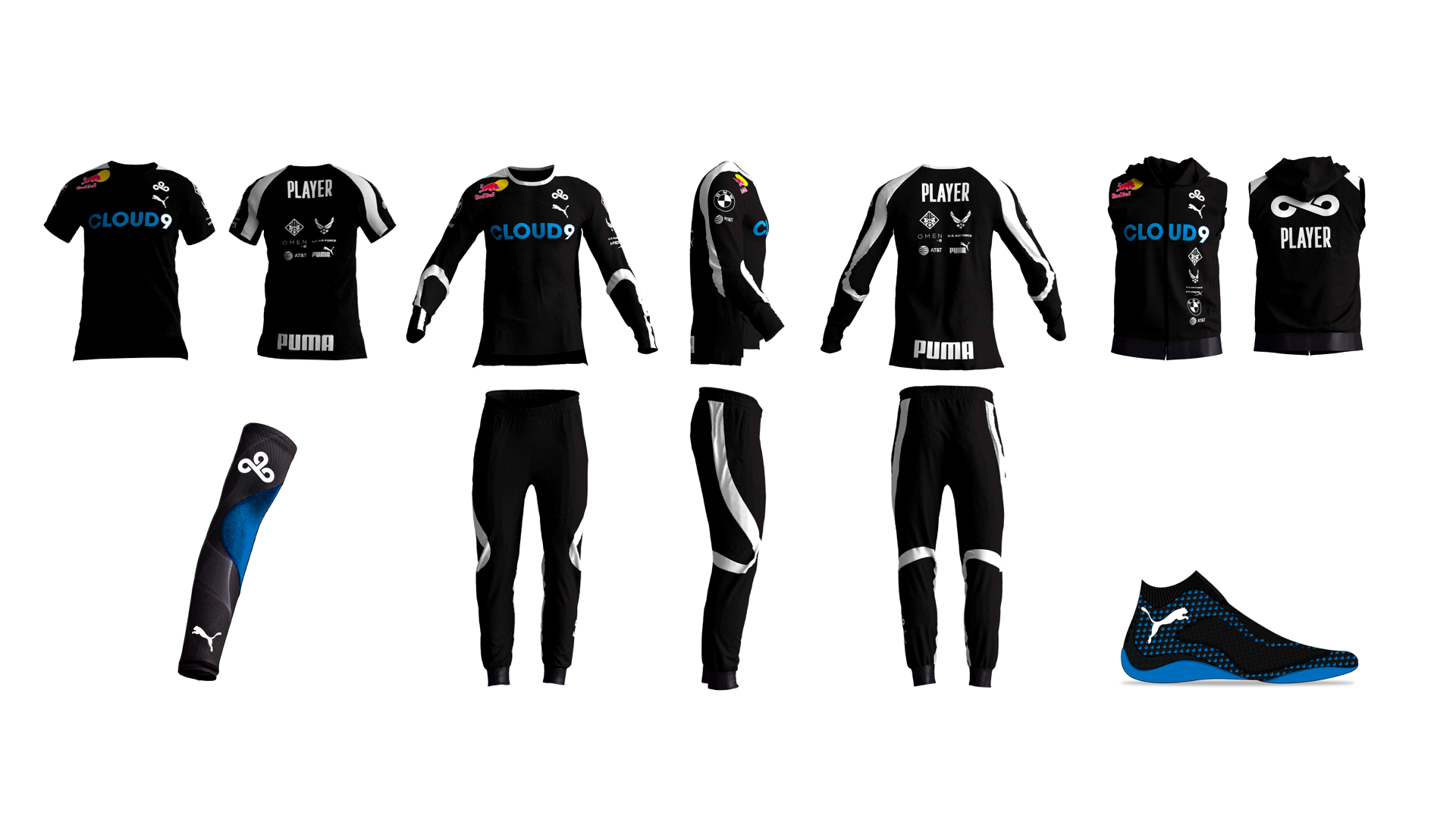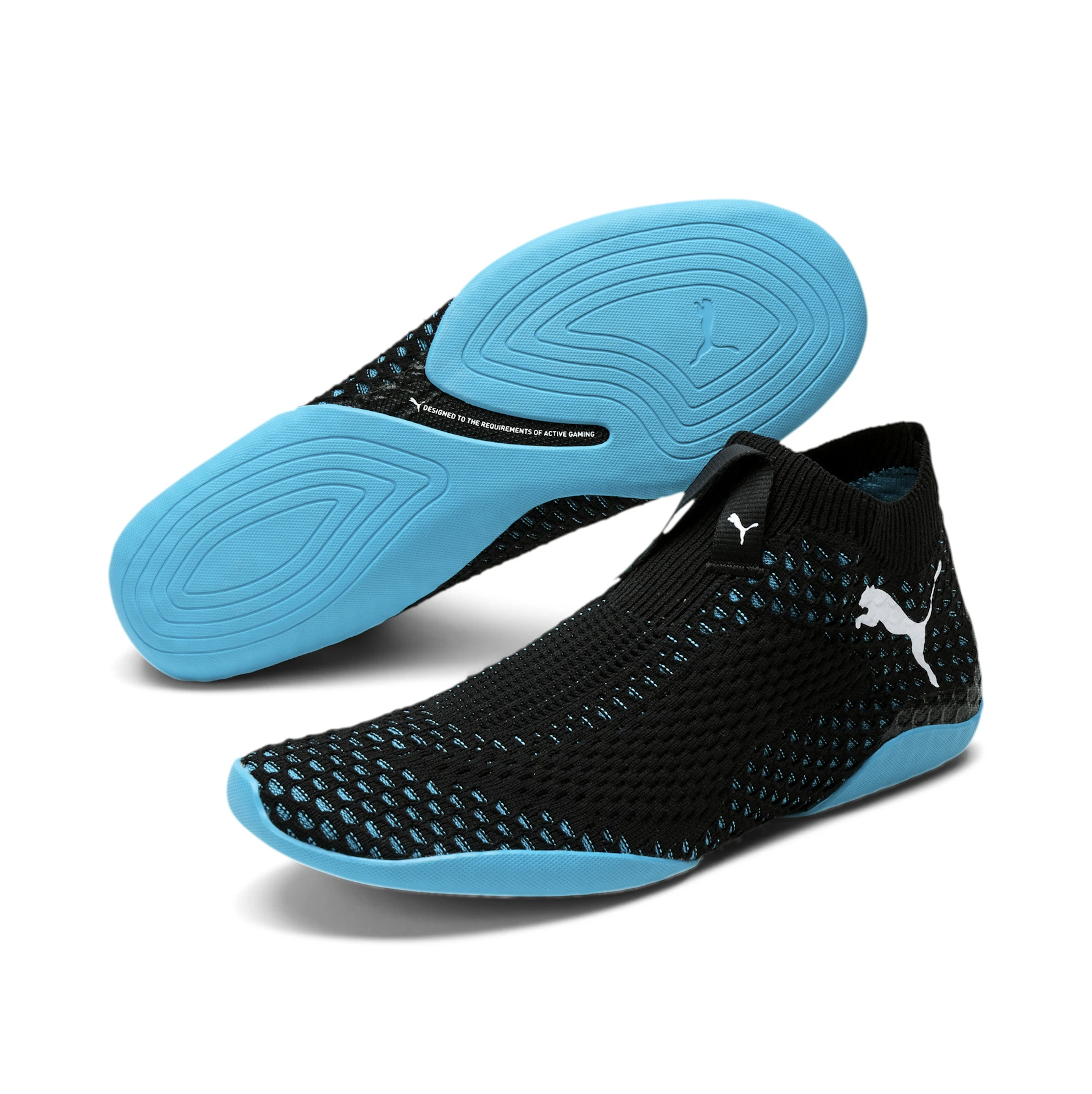Are gamers athletes? Do esport professionals have unique performance requirements? What do traditional sports brands have to do with esports? As gaming became more and more an important channel in connecting with the Puma consumer, I set out to find the answers to those questions. My goal was to uncover the unmet needs that might inspire innovation in gaming and esports.
Our approach began the same way we would approach any new frontier. - Research.
We treated esports as though we knew nothing about it. We spent time with professional players in both their competitive and training environments. We connected with team management, league officials and fans. We experienced the sights and sounds of the game in order to gain authentic knowledge of what is important to this unique section of modern culture.
Photo - At Puma headquarters with Cloud 9.
We wanted to find out if gamers require anything unique when it comes to their competition kit.
The default methodology for most brands investing in esport teams was to outfit their players with football jerseys. The logic is understandable; they should look like a team. But there was no further investigation to find out if what they were being offered answered to authentic needs either physically or emotionally. Did these players want football jerseys or did they want something else?
Photo - At SKGaming training facility, Cologne.
Professional gamers spend the majority of their time training and competing on the computer. They also spend time in the gym working out.
Their regimen is designed to establish both physical and mental strength. In this way we discovered a parallel universe between analog sports like football and digital sports like gaming in terms of focus and commitment to maintaining a high level of performance. There are also similarities when it comes to compensation and the accompanying stress of the desire to win. Quite simply there is a lot of money to lose if the professional gamer is not in top form.
Photo - At SKGaming training facility, Cologne.
One of the things I enjoy most is doing research; talking to (in this case) professionals who have needs some of which they themselves have not clearly identified.
This is when asking the right questions and listening for not only the answers but that answers that are not given becomes the practice. In my experience athletes can’t always articulate what they need. So you have to ask questions around a given topic of performance to get insights. And emotional insights are as important as physical ones. It is essential that an athlete is confident that their gear will do what they want it to but also that they have the feeling that it will. That can be emotional confidence as well is literal confidence.
Photo - At SKGaming training facility, Cologne.
One example where this plays out is the design of basketball shoes.
Common understanding is that a hight top basketball shoe offers more physical support around the ankle which is vulnerable to injury during extreme motions in playing the sport and so is a better option. The truth is there is something called proprioception at play that makes a high cut basketball shoe better. The extra material on a high cut basketball shoe produces stimuli on the ankle which transmit signals to the brain that the ankle is protected when in actuality it is no more protected. Full protection would require a stiff, inflexible shoe which is not practical and goes against other important player functions like running or jumping.
Esport professionals do not put the same stresses on their bodies as basketball players. But they do require the same emotional satisfaction when it comes to their ability to focus on their game. What we discovered was that they want as few distractions as possible when it comes to mouse clicks and keyboard strokes. Comfort in gaming is essential. A seam out of place, something that does not fit right or inability to adjust to temperature can throw off their game.
Photo - At Cloud 9 training facility, Los Angeles.
Feedback was essential.
We began our research first with observation. We watched professional PC gamers at practice. We saw what they were doing, what they wore and what rituals they adopted. Our observations guided us to certain solutions which we prototyped. We returned to the players with the prototypes and got their feedback. Asking them what they felt was equally as important as what we delivered to them. In getting their thoughts and opinions they knew that they were being listened to; that what we shaped was not just our vision but rather a reflection of their reality. That builds confidence not only in the relationship but also on the field of play. A gamer can step into the arena with understanding and pride that what they are wearing was designed for them.
Photo - At Cloud 9 training facility, Los Angeles.

When it came to shaping the garments we partnered with Swedish based design house Atacac. Their methodology of kinetic garment construction was the foundation for the collection.
This is the practice of shaping patterns based on human anatomy; the form of the body, the skin that drapes it and how it moves and stretches. Done properly the garment moves with the body in enhanced comfort. It eliminates the distractions of ill-fitting clothing. We shaped the garments to fit the body in the gaming position; pre-shaped in the shoulders, arms and legs. We developed a system of garments that could be combined in different ways to accommodate a variety of training, travel and arena temperature conditions as well as a variety of individual needs.

When we observed that many players play in socks, we created an item of footwear we call a gaming sock which brought the comfort of socks in a more protective and durable architecture. A player could walk on stage in an arena without the undressed feeling that socks alone would bring.




Project Profile
What is it?
The first ever esport specific apparel concept. Created in partnership with Sweden based Atacac design studio. Our muse was Cloud 9 esports team but the collection will be the standard for all Puma esports teams.
Why is it innovative?
It answered to an unmet need of gaming-specific apparel and footwear. It applied kinetic garment patterning methodology to develop apparel that created a unique fit to the body.
What were the biggest challenges?
Getting the corporate organization to adopt responsibility and support commercial development. Because Esports was an entirely new sport category it did not have a natural business “home”.
What was your role?
Chief Evangelist, Lead Researcher, Communications Director.
I was the driving force behind introducing this entirely new sport product category to Puma. It served as a marquis element to forging our entry into esports and gaming..
Why was it successful?
It emerged as a standard product collection for Puma Esports teams. It was validated by professional gamers.











